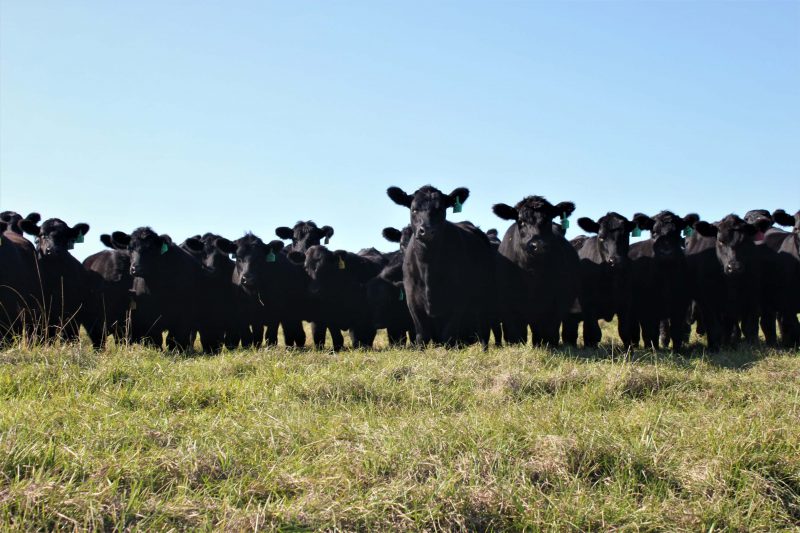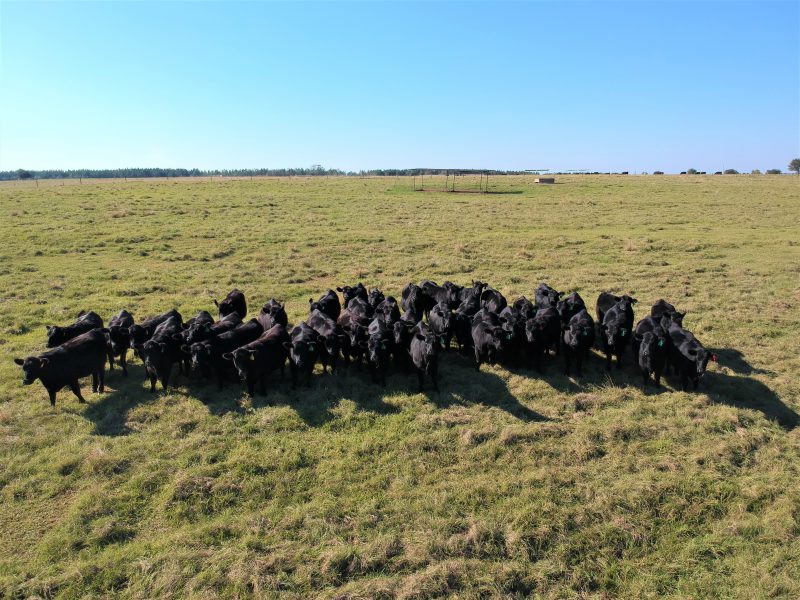
Utilizing grazing management key to beef cattle performance and forage resource sustainability. Photo Credit: Nick Simmons, UF/IFAS Extension Escambia County
We have reached the time of year when most our pastures have settled into adequate production enabling us to graze cattle on a more frequent basis. Recently, while discussing pasture/grazing conditions with producers, I’ve noticed three terms being used interchangeably – stocking rate, carrying capacity and stocking density. These terms are very similar in name but very different in meaning. Most producers have a general understanding and experience with some form of grazing management, and generally speaking, try to make the best management decisions they can to maximize the productivity of their pastures. Understanding the differences between stocking rate and stocking density will help producers make better, more informed management decisions.
Stocking rate is a generally used term with a straight forward definition. Simply put, stocking rate is the relationship between the number of animals and the size of forage resource on which they are placed. For example, if you have 100 acres of pasture with 100 650lb. yearling stockers, the stocking rate for that pasture is one steer/acre or 650 lbs. liveweight/acre. You should be mindful that identifying and maintaining the proper stocking rate for a forage resource is the starting point for keeping a sustainable pasture. Each acre of land will only produce a certain amount of forage and support a certain number of livestock. Your stocking rate can affect several aspects your pastures including forage productivity, soil compaction, animal performance, weed pressure, and others. A term that is sometime thrown around by producers when talking about stocking rate is the land’s carrying capacity. The two terms are not the same. Carrying capacity is the number of animals that a forage resource can support in a growing season. This is dependent upon proper management and an acceptable level of production.

Replacement Heifers on established pasture. Photo Credit: Nick Simmons, UF/IFAS Extension Escambia County
The term stocking density is more commonly used when we think of short-term, intensive grazing management. Stocking density is the number of animals (or liveweight) on a part of the pasture for a certain portion of time. The key terms to remember are area and time. We must look at stocking density as animal concentration and a tool used to accomplish our goals of intensive grazing management. If we build on the previous example, we have the same 100 acres, now split into ten, 10-acre paddocks for our 100 650lb stockers. The stocking rate has remained the same, but the stocking density has increased 10 times. We now have a stocking density of 6,500 lbs./acre. The carrying capacity of this paddock can only sustain this density for a short period of time, necessitating rotational grazing. In this system, paddocks are grazed ten percent of the time and rested ninety percent of the time.
High density grazing has shown many positive results in forage productivity. These benefits include more uniform grazing, lower weed pressure and greater utilization of stockpiled forage. Rotational grazing is also beneficial for smaller blocks of land and helps producers have more control of how intensely and frequently their pastures are grazed through the growing season. As we progress through the next several months of summer grazing, consider taking the time to evaluate your pastures and the potential carrying capacity. You many need to adjust the stocking rate and consider various rotational grazing methods.
Reference: J. Gerrish, Stocking rate vs. stock density, Beef Magazine, August 2006
Additional Resources:
Impact of Grazing Methods on Forage and Cattle Production
Pasture Stocking Density and the Relationship to Animal Performance
- 2026 Santa Rosa CountyRow Crop Production Meeting – January 22 - December 19, 2025
- Hay Quality and Quantity Considerations for Winter Feeding - September 5, 2025
- Managing Lice on Cattle - February 28, 2025
